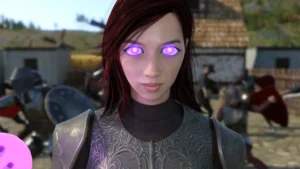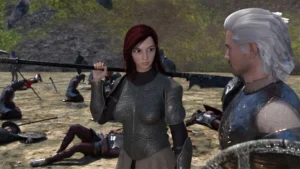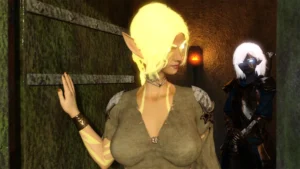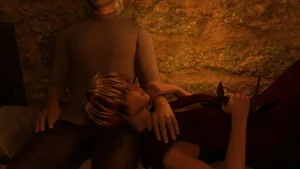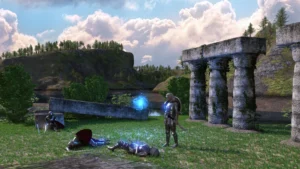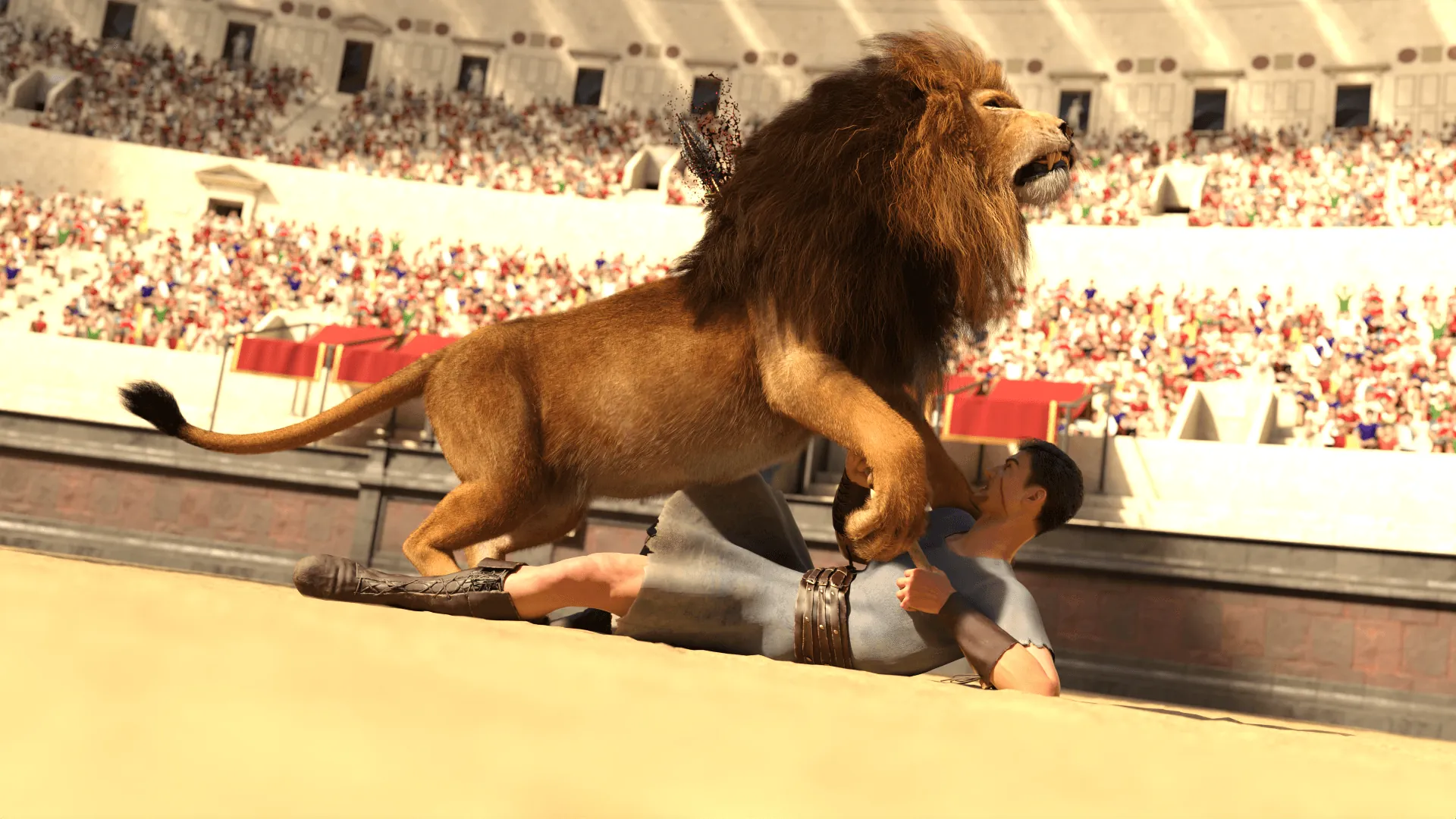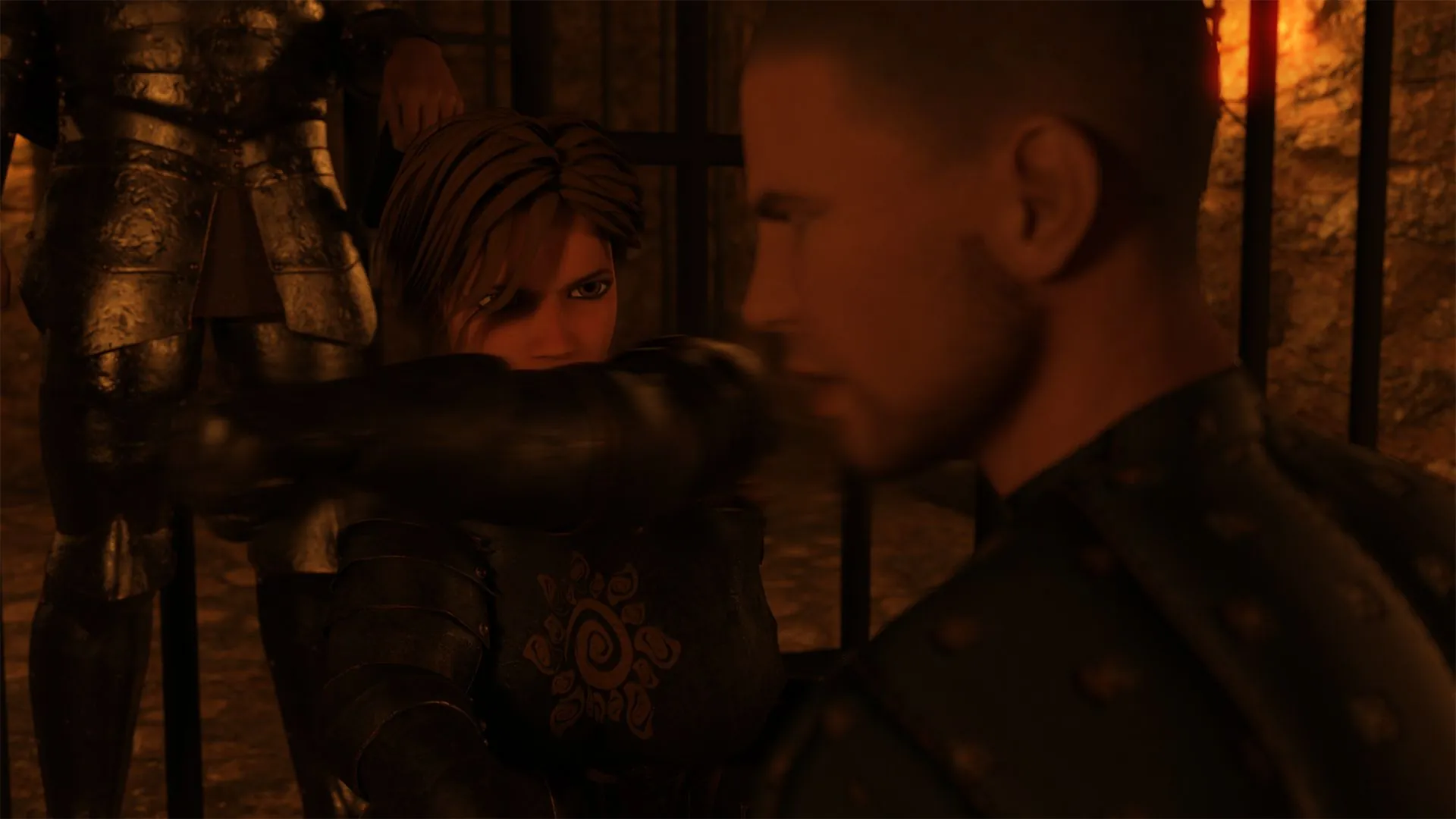
Play After the Inferno
After the Inferno review
Explore the immersive world, mature themes, and memorable characters of this standout adult visual novel
If you’re searching for a visual novel that blends rich storytelling, fantasy adventure, and mature animated scenes, After the Inferno stands out as a unique experience. Set in an original medieval world, the game follows Devran, a respected mercenary leader facing impossible choices as war engulfs the kingdom. With fully animated and voice-acted sequences, After the Inferno offers both depth and intensity, appealing to fans of character-driven narratives and those seeking more adult-oriented content. Whether you’re drawn by the plot twists, the relationships, or the visual presentation, this game delivers a memorable journey—one that’s as much about heart as it is about heat.
Story and Setting: A Fantasy World at War
The Mercenary’s Dilemma: Loyalty vs. Survival
Picture this: you’re leading a band of fighters you call family, and a gold-laden envoy from a brutal, expansionist empire offers you a fortune to simply… step aside. 🤑 Your people are tired, your supplies are low, and the cause you’re fighting for looks increasingly lost. What do you do? This is the gut-wrenching reality for Devran mercenary leader of the Ravens, the protagonist we guide in the unforgettable After the Inferno story.
The game throws you headfirst into a brutal conflict, where the proud Kingdom of Saterra is buckling under the relentless Isenian Empire invasion. This isn’t a simple tale of good versus evil; it’s a murky, grey landscape where every decision has weight. As Devran, your primary duty isn’t to a king or a flag—it’s to the men and women who trust you with their lives. The central fantasy war setting becomes a pressure cooker for your conscience. Do you take the enemy’s coin to ensure your squad’s survival, or do you honor a contract and potentially lead them to their graves for a principle? 🤔
“Loyalty bought with coin is no loyalty at all. But neither is a corpse’s gratitude.”
This line, spoken by a weary Devran, perfectly captures the game’s tone. I remember facing a pivotal moment where an Isenian general offered me a small fortune and safe passage for my crew if I betrayed a Saterran fort’s location. The game didn’t flash “GOOD” or “EVIL” on the screen. It just waited. My choice to refuse, based on a promise made to a dying soldier earlier, locked me out of a lucrative alliance but cemented a bond of unwavering trust with my team that paid off in unexpected ways later. This is the essence of the moral choices in visual novel gameplay here—they are deeply personal and have cascading consequences.
Key Characters and Relationships
At the heart of any great After the Inferno story are the people who live it. This game excels at creating a cast that feels less like digital constructs and more like complicated friends (and sometimes foes) you genuinely care about. 🫀
Leading this troupe is Devran mercenary leader, a man scarred by past battles and burdened by the weight of command. He’s pragmatic but possesses a core of integrity that you, as the player, get to either nurture or suppress. His relationships with his core squad members—the grizzled veteran Kael, the idealistic healer Lyra, and the sly scout Jax—form the emotional bedrock of the narrative. Your dialogues and decisions directly shape these bonds, turning them from simple comradeships into unbreakable brotherhoods or, potentially, bitter rivalries.
Then, everything changes with the arrival of Emmy and her elite unit. The Emmy squad dynamics are a fascinating counterpoint to Devran’s own. Where the Ravens are a family of necessity, Emmy’s squad is a disciplined, almost fanatical military unit. Their integration into your group is anything but smooth. 🚧 It creates a brilliant narrative friction, forcing Devran to balance old loyalties with new alliances. Is Emmy a valuable ally or a political threat? Can her methods be trusted? Your answers to these questions dramatically alter the group’s cohesion and the story’s direction.
The game also weaves in potential romantic subplots with a maturity rarely seen in the genre. These relationships aren’t just titillating distractions; they are complex narratives built on shared trauma, mutual respect, and difficult choices in the face of war. 💔 Pursuing a connection with Lyra might mean making more compassionate choices, while an entanglement with a member of Emmy’s squad could pull you toward a more ruthless, ends-justify-the-means path.
| Character | Role | Key Motivations |
|---|---|---|
| Devran | Mercenary Leader of the Ravens | Protecting his squad, securing their future, grappling with his past |
| Emmy | Commander of the Imperial Relief Force | Military duty, securing victory for Saterra, challenging established norms |
| Kael | Veteran Fighter | Loyalty to Devran, survival of the Ravens, honoring fallen comrades |
| Lyra | Combat Medic | Healing the wounded, preserving life, maintaining hope |
| Jax | Scout and Infiltrator | Practical survival, profit, testing boundaries |
Themes of War, Love, and Moral Choice
What truly elevates the After the Inferno story is its unflinching commitment to exploring heavy, resonant themes. This is so much more than a simple war story; it’s a poignant examination of the human condition under extreme duress. ✨
The theme of war is not glorified. Instead, the game focuses on its gritty, personal cost. You see it in the exhaustion of your soldiers, the haunted looks in refugees’ eyes, and the difficult decisions about rationing food and medicine. The Isenian Empire invasion is the catalyst, but the story is about how ordinary people are chewed up and spit out by the gears of conflict. The fantasy war setting allows for epic battles and magic, but it never loses sight of the intimate, human tragedy at its core.
Love, in all its forms, is the counterweight to this darkness. The platonic love between soldiers, the budding romance between damaged individuals, and the familial love Devran feels for his Ravens—these connections are what everyone is fighting to preserve. 🛡️ The game argues that in the midst of hell, these bonds are the only things that keep us human. However, it’s also brutally honest about how war strains and can even break them.
This all culminates in the game’s masterful handling of moral choices in visual novel mechanics. There is rarely a “right” answer. A choice that saves one life might condemn another. A decision that strengthens your position militarily might weaken you morally. I once had to choose between rescuing a group of civilians pinned down by enemy fire or seizing a strategic artillery position that would save countless lives later. The game didn’t judge me for my tactical choice, but I certainly had to face the characters whose family members I effectively sacrificed. 😟 These are the moments that stick with you long after you’ve finished playing.
The After the Inferno story is a masterclass in interactive storytelling. By placing you in the worn boots of Devran mercenary leader, it makes you feel the immense pressure of command and the profound weight of every single choice. As you navigate the fall of the Kingdom of Saterra and manage the disruptive Emmy squad dynamics, you’re not just reading a story—you’re living one, and its emotional resonance is a testament to its incredible depth and quality.
After the Inferno is more than just another adult visual novel—it’s a richly crafted fantasy adventure that balances mature content with genuine storytelling and character depth. From Devran’s impossible choices to the evolving relationships within his mercenary band, the game invites players to engage both emotionally and intellectually. Whether you’re drawn by the animated scenes, the voice acting, or the intricate plot, there’s something here for fans of deep, interactive narratives. Ready to dive into a world where every decision matters? Start your journey with After the Inferno and discover why it stands out in the crowded visual novel landscape.


